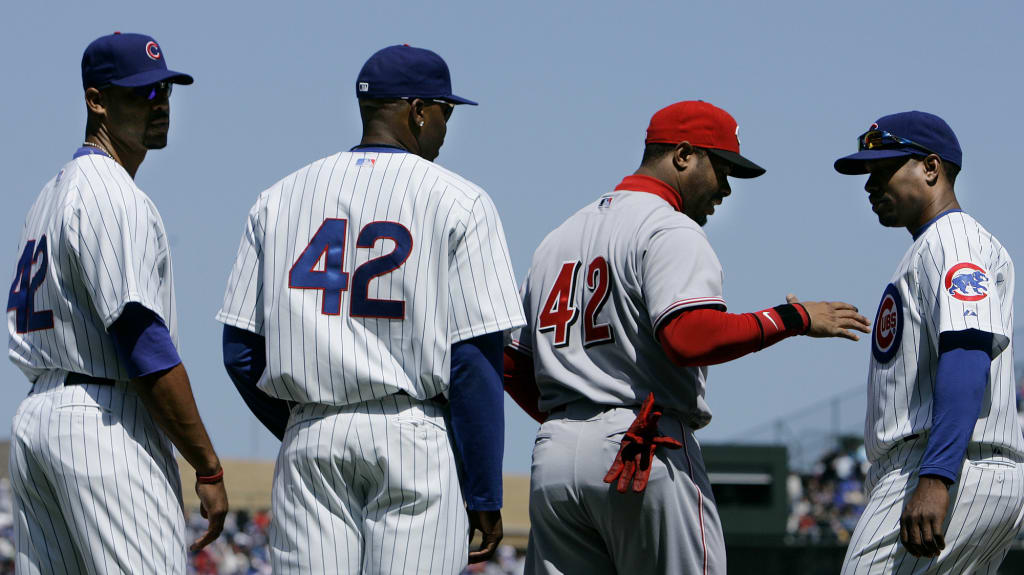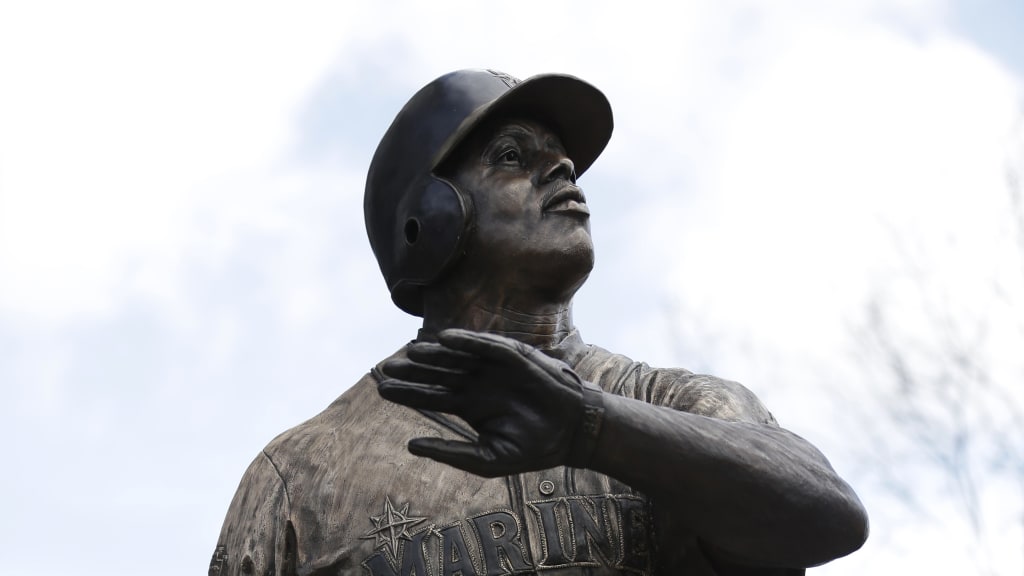A version of this story was originally published in April 2020.
April 15 is special. It arrives around the same time that baseball starts to get into that everyday regular-season groove, and, as a staple of the Major League calendar every year, Jackie Robinson Day provides a welcome, classy, meaningful shift from a typical gameday.
Every player wears No. 42 that day, and there’s a special feeling in clubhouses as the players dress for the game. The jerseys that hang in the lockers have a regal look about them. The image of them all lined up, identically, locker after locker, is really something to see.
Robinson’s No. 42 was officially retired by Commissioner Bud Selig on April 15, 1997, in a mid-game ceremony at the Dodgers-Mets game attended by Robinson’s widow, Rachel, and President Bill Clinton. For many years after that proclamation, the only players who wore No. 42 were those who were already assigned the number and were permitted to continue using it, such as Mariano Rivera.
But in 2007, the number was slowly brought back into circulation by a handful of players, just for one day -- April 15. Two years later, everyone was wearing No. 42 on Jackie Robinson Day.
How did this come about?
We can thank Ken Griffey Jr. for all of it.
Griffey was the first player to come up with the idea of wearing No. 42 on April 15. Interestingly, he implemented it twice.
To trace the first time he broached the idea, we have to go all the way back to April 15, 1997, the 50th anniversary of Robinson's Major League debut, and the day Selig retired his number. Griffey, who was playing for the Mariners at the time, asked that his uniform number be flip-flopped, switching from No. 24 to 42.
Fast forward 10 years, and Griffey again wanted to wear No. 42 to commemorate the 60th anniversary of Robinson's debut. But this time, since the number was retired, he had to ask permission.
So he called Selig at home.
"I said, 'Would it be possible if I wore 42 on Jackie Robinson Day?'" Griffey recalled during an interview with Harold Reynolds on MLB Network. "We had a 10-minute conversation. [Selig] said, 'Is it OK if I call Rachel [Robinson, Jackie's wife] and ask if it's OK?'"
Selig called Griffey back the next day and granted the request, but added he would like to extend the offer to wear No. 42 to anyone who wanted to.
"I said, 'The more, the merrier,'" Griffey said.
That year, Griffey and a handful of Black players from other teams took up the offer and wore No. 42. That was the protocol for the next two seasons -- players had the option to wear the number, but it was an individual decision.
In 2009 -- five years after MLB officially designated April 15 as Jackie Robinson Day -- Selig expanded the exercise, announcing that everyone who wore a uniform -- players, coaches and managers -- would wear No. 42. That tradition continues today.

"It just mushroomed into everyone wearing No. 42," Jackie's daughter, Sharon Robinson, said in the MLB Network documentary "Letters From Jackie." "It really makes us very, very proud and very thankful that they are appreciative of the history of baseball, including a major moment when it was integrated."
Griffey's admiration of Robinson and what he stood for as a baseball and civil rights icon began early in his life and continues today, a decade after he retired. Reminders are everywhere, including on the bronze statue the Mariners unveiled of the Hall of Famer three years ago. On the right sleeve of the seven-foot bronze statue is a Jackie Robinson patch.

Griffey’s home in Orlando is 35 minutes from Sanford, Fla., where Robinson lived during his first Spring Training in 1946 with the Montreal Royals, the Dodgers' Triple-A farm club, in a time of considerable racial tension. Griffey said he drives by the house from time to time and uses it as a teaching moment for his kids.
"When you've got a couple kids that play baseball, they play in that area, so we're like, 'This is where it started,’” Griffey said at the statue unveiling. “They just look at me like, 'What?' And I say, 'Here's your book.' It's quite interesting, and to have that [patch] is pretty sweet."
While he’ll be best remembered as one of the greatest hitters in baseball history, that’s clearly not where Griffey’s legacy ends. Every April 15 serves as a reminder about the small gesture that sparked league-wide interest and has turned into one of baseball’s best traditions.
“To have everybody [wear 42], I didn't think it was going to go that far,” Griffey said. “I wasn't thinking that big, but it's been an unbelievable thing since day one.”
